


1791
OUR EPIC
SAGA
BEGINS
Our epic saga begins

JEAN-FRANCOIS BAUTTE
(1772 - 1837)





Girard-Perregaux can trace its origins to 1791.
Jean-François Bautte (1772-1837) began signing watches with his own name in 1791, aged just 19. Despite his youth, Bautte had already acquired a vast array of skills, including case assembly, goldsmithery and watchmaking. Bautte was a talented craftsman and a consummate salesman. Indeed, such was his prowess for commerce that he eventually became his former employer's business partner.







Bautte's designs attracted attention from around the globe.
His patrons included aristocrats and royalty. He created all kinds of creative timepieces, such as perfume guns, extra-thin watches and music boxes. Each piece is engraved or enamelled in minute detail, or set with precious stones. Charming and extravagant, he was even known to perfume his workshop with eau de Cologne and have the logs for his fireplace shaped by a wood-turner before receiving visitors!


BAUTTE WAS A VISIONARY.
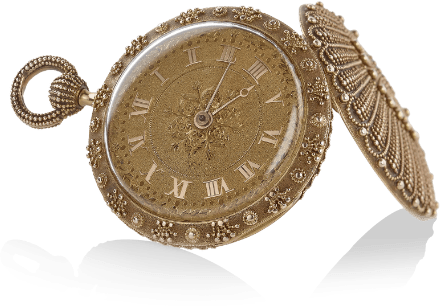

Keen to meet increasing demand for his products, he created one of the first Manufactures in Switzerland with a workforce of approximately 180 people. Prior to this, production was dispersed among small independent workshops, called ‘établisseurs’. Bautte’s approach led to specialised trades working together under one roof, facilitating the division of labour and, thereby conferring various economic benefits.
This approach was adopted by the ‘Manufacture’, a system of production that Girard-Perregaux continues to employ to this day.



Cruciform pendant watch, with cross-shaped movement, 1870, Girard-Perregaux

Pocket watch decorated with multicolour enamel, 1840, Bautte & Cie

Yellow gold Lépine pocket watch, case paved with more than a thousand natural pearls, 1820, Bautte & Moynier
1847
Girard-Perregaux is born
GIRARD-PERREGAUX IS BORN


Constant Girard
(1825-1903)
Constant Girard was born in La Chaux-de-Fonds, a city often referred to as the ‘watchmaking capital of Switzerland’. Girard served an apprenticeship, working for a master watchmaker, honing his skills before establishing his own company in 1847, aged 22. Girard’s grandfather was a watchmaker and his father was an engraver, suggesting that craftsmanship was in his genes.


MARIE PERREGAUX
(1831-1912)

CONSTANT GIRARD
(1825-1903)



1856
Girard-Perregaux was founded.
Constant Girard married Marie Perregaux (1831-1912) the daughter of an esteemed watchmaker from Le Locle, the village at the end of the valley, who shared his love for the art of time. Two years after their marriage, in 1856, the Maison Girard-Perregaux was born.
1860
Constant Girard-Perregaux was fascinated by the Tourbillon.
The invention by Abraham-Louis Breguet was patented in 1801. This system involved placing the escapement and regulating organ within a rotating cage (usually turning 360° every minute) in order to counter the adverse influence of gravity on the balance. Constant would expend vast amounts of time appraising the mechanism, conceiving his own ideas for movement design as well as the shapes of various parts.



The recognition of the Maison was rising abroad. Marie Perregaux’s brothers became ambassadors for the brand. At a time when voyages were long and perilous.
François Perregaux travelled and established in Yokohama, Japan.


FRANÇOIS PERREGAUX
(1834-1877)




Henri and Jules Perregaux went to North and South America.
Together, they introduced Girard-Perregaux to nascent connoisseurs who were discovering the art of time and Swiss Haute Horlogerie.

HENRI PERREGAUX
(1828-1893)

JULES PERREGAUX
(1838-1903)



In
1867
Constant Girard presented the Tourbillon with Three Bridges.
This would later become his masterpiece, the Tourbillon with Three Gold Bridges, also known as La Esmeralda. This piece transformed the architecture of the watch, turning a purely functional component – the bridge – into an aesthetic feature. It features three prominent bridges made from nickel silver and arranged in parallel. This marked a watershed for the watch industry where form and function suddenly became entwined.


Later, Constant focussed on using gold as his primary material for the aforementioned bridges, producing them in an eye-catching arrow-shaped profile. He sought to protect his distinctive design, however, because no such mechanism existed in Switzerland, he registered his patent in the United States of America in 1884.


1889
LA ESMERALDA WINS A GOLD MEDAL AT THE PARIS UNIVERSAL EXHIBITION
La Esmeralda became the watchmaking icon it remains to this day: up close or at a distance, one glance is enough to recognise its symmetry, unique architecture, and the shape of its Bridges.






1904



CONSTANT GIRARD-GALLET
(1856-1945)
Constant Girard-Gallet (1856-1945)
He took over the reins of the Maison after the death of his father, in 1903. One year after, the first Girard-Perregaux manufacture building was achieved in rue des Tilleuls 2 in La Chaux-de-Fonds.


Constant Girard-Gallet took over the famous Ancienne Maison Bautte, merging it with Girard-Perregaux & Cie. From that time onwards, the oldest roots of the Manufacture are linked with the prestigious entrepreneur from Geneva.
THE PURSUIT OF INNOVATION
1930
The Pursuit of Innovation
Otto Graef
(1862-1948)
Otto Graef, a German watchmaker took over the reins at Girard-Perregaux. He and his family of watchmaking entrepreneurs brought the Maison to new heights. No fewer than three generations would succeed him! In 1930, sales of wristwatches exceeded those of pocket watches for the first time.

OTTO GRAEF

Thanks to the Graef family and their pursuit of innovation, Girard-Perregaux became one of the few watchmakers to have its own research and development department inside the Manufacture in La Chaux-de-Fonds.




1945
VINTAGE 1945
1945 saw the creation of a rectangular Art Deco inspired model, which would be revived fifty years later and dubbed the “Vintage 1945”.


1966
GYROMATIC HIGH FREQUENCY
AUTOMATIC MOVEMENT


In 1966, Girard-Perregaux, active in the field of high frequency movements, released its aptly named Gyromatic High Frequency automatic movement. The balance had a frequency of 36,000 Vib/h – (5 Hz), a cadence that confers superior precision. This movement was a first in Swiss watchmaking and such was the significance of its development, the Maison was awarded the Centenary prize of the Neuchâtel Observatory. Moreover, today’s 1966 collection pays tribute to this milestone in the company’s history.


1969
DEEP DIVER


Girard-Perregaux presented the Deep Diver, a diving watch featuring a steel case with 14 facets bezel, internal diving scale commanded by a crown, synthetic strap and the Gyromatic patented self-winding mechanical movement.
1971
QUARTZ WATCHES



Upholding its reputation for being proactive and innovative, Girard-Perregaux launched first serially produced quartz watches in 1971. The frequency of 32,768 Hz set by the Maison has remained the universal standard for quartz watches.
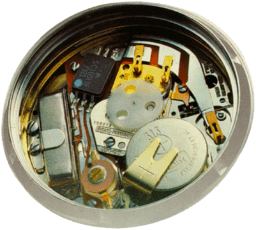



1975
LAUREATO





Laureato was launched in 1975.
The inaugural watch was called the ‘Quartz Chronometer’. However, in Italy, the model soon became known among the cognoscenti as the ‘the graduate (Laureato in Italian) of the school of Girard-Perregaux’. This affectionate name served as an acknowledgement of the model’s prize-winning success and extraordinary precision. Ultimately, the name was adopted by the Maison.
Over the years, subtle changes have been made to the design of the Laureato, but the essence of the original 1975 model has always been retained. The round case is framed by an octogonal bezel and the integrated bracelet appeared to seemlessly fuse with the watch head. In 2017, Girard-Perregaux released the fifth generation of the Laureato still equipped with in-house movements.

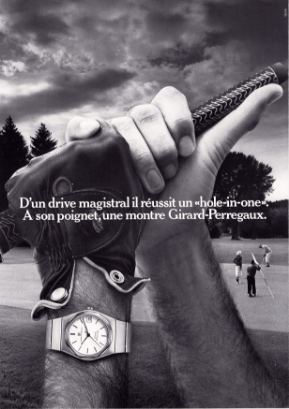

1976
CASQUETTE


The cutting-edge and original Casquette, presented in 1976, is endowed with a tubular LED display. Truly innovative at the time the LED was a record-breaking feat of miniaturisation. Powered by a quartz movement delivering a high degree of precision, it displayed the hours, minutes, seconds, day and date.


In 2022, the Casquette is back! Named the Casquette 2.0, this new model upholds the design language of the original but is now encased in ceramic and Grade 5 titanium. Moreover, it features a new quartz movement with additional functionality.
HERALDING
A MECHANICAL COMEBACK
1982
Heralding a mechanical comeback












At the end of the 1970s, with the rise of quartz, the Swiss watch industry was in deep crisis. Girard-Perregaux was one of the first prestigious watch companies to take up the challenge of a return to traditional mechanical timepieces.
In the 1980s, there was a strong desire to reinvent our icon. The Tourbillon with Three Gold Bridges made its return, firstly as a pocket watch. This feat required disassembling the original model from the 1800s, then completely recreating it, component by component – with the tools available at the time.
1991
For its bicentenary in 1991, the Maison achieved a new technical ingenuity: miniaturising all the components of the Tourbillon with Three Gold Bridges pocket watch so they could be worn on the wrist.







The Tourbillon with Three Gold Bridges wristwatch was born!
Even today, the Maison remains true to the essence of the 150-year-old Three Bridges. Blending past and future, it takes the aesthetic of the 1800s and transforms and modernises it to create today’s contemporary Three Bridges versions.

Skeletonized and engraved Tourbillon with Three Bridges wristwatch, 1990s, Girard-Perregaux

Lyre-shaped tourbillon cage, 1982, Girard-Perregaux

Tourbillon with Three Gold Bridges diamond set, 1997, Girard-Perregaux
DRIVING INTO NEW DEVELOPMENTS
1992
Driving into new developments




LUIGI MACALUSO
Luigi Macaluso took the wheel at Girard-Perregaux in 1992.
Entrepreneur, architect and former motor racing driver, he also was dedicated to the concept of integrated Manufacture. As a result, major investments were undertaken, particularly in the field of research and development. Two years later, a new family of ‘GP 3000’ ultra-thin mechanical calibers was launched.
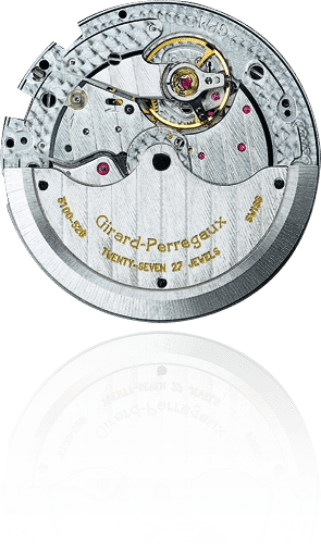

Passionate about motor racing, the visionary established a 10-year partnership with Ferrari, which led to some of the Maison’s most coveted creations.






1999


Girard-Perregaux attends the SIHH (Salon International de la Haute Horlogerie) in Geneva for the first time where a Tourbillon with Three Gold Bridges fitted with automatic winding system is presented. This significant improvement was made possible thanks to a patented micro-rotor placed under the barrel.




2000
Our Manufacture is housed in a century-old historical building in La-Chaux-de-Fonds in rue Numa-Droz 136. Since then, all the skills of watchmaking are gathered under one roof.



CONSTANT ESCAPEMENT L.M. AT THE HEART OF INVENTION

2008
When a mainspring is wound, it harnesses much energy which is slowly released via the gear train to the escapement and, ultimately, the regulating organ. An inherent weakness affecting most mechanical watches is the energy supplied to the escapement inevitably diminishes causing the amplitude of the balance wheel to drop, ultimately impairing precision.
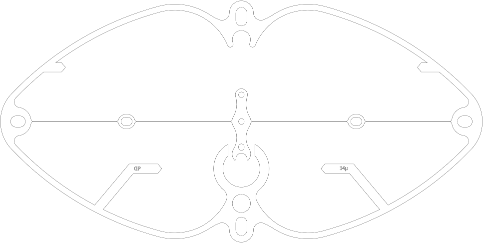
In 2008, the Manufacture unveiled the first prototype of the Constant Escapement, an ingenious timepiece that employs a flexible blade which buckles by a defined amount, transferring a pulse of energy to the balance. By shunning the ubiquitous Swiss lever escapement, energy from the blade is transmitted directly to the balance. Later, in 2013, the prototype was adapted for serial production and made available for general sale.




The benefit of this movement is that it delivers the same amount of energy to the escapement, whether the mainsprings are fully tensioned (day 1) or near exhaustion (day 6), ultimately conferring excellent rate stability. The technical virtuosity of the Girard-Perregaux Constant Escapement culminated in it winning Aiguille d’Or at the Grand Prix d’Horlogerie de Genève (GPHG) in 2013, the same year it was released.
2011
GENUINE
HIGH-WATCHMAKING ALIVE
Genuine high-watchmaking alive

PATRICK PRUNIAUX
Kering, the French luxury good holding company, aquires 51% of Girard-Perregaux.
Four years later, the group owns the entire stake of the Swiss manufacturers Girard-Perregaux and Ulysse Nardin.





In August 2018, Kering appoints Patrick Pruniaux as Girard-Perregaux’s Chief Executive Officer. The charismatic and business savvy executive is genuinly leading the brand towards the next chapter of its 230 years of history.


2014
In 2014, the Neo-Tourbillon with Three Bridges imposes new rules in terms of aesthetics.
A quest for volume and a drive for three-dimensionality on a micrometric scale has powered the minds of our engineers and designers. The oldest signature within the industry is now dressed with skeletonized 3D shaped bridges and a Tourbillon cage made of titanium.

A bridge between classic and contemporary.
2021






Girard-Perregaux becomes the official watch partner of British brand Aston Martin for both its prestigious road and Formula 1 cars.
These two century-old brands are united by their preoccupation with time, a playful approach to forms, and the link between aesthetics and functionality.





2022
Girard-Perregaux and sister Maison Ulysse Nardin now form an independent collective of High Horology Manufactures.


















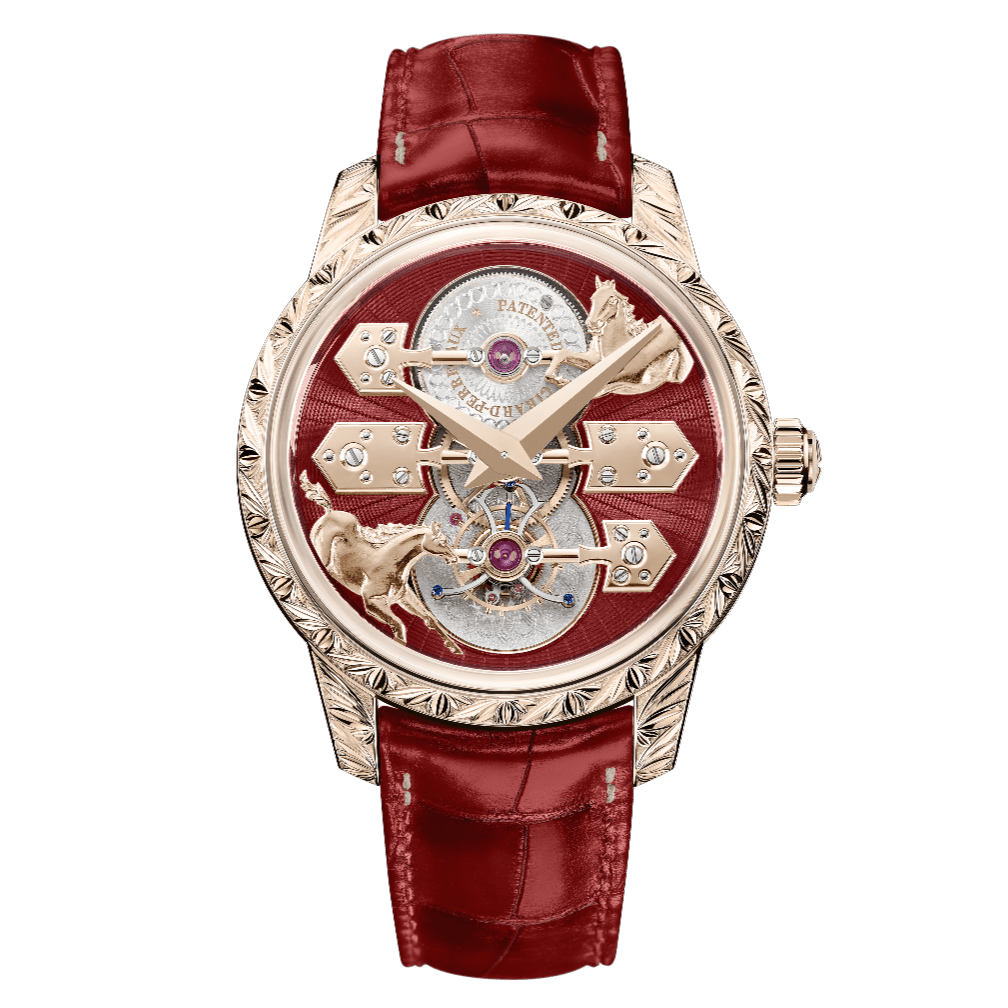
 Laureato 38mm
Laureato 38mm  Laureato 42mm
Laureato 42mm  Casquette 2.0
Casquette 2.0  La Esmeralda Tourbillon "A Secret" Eternity Edition
La Esmeralda Tourbillon "A Secret" Eternity Edition  Laureato 42 mm Eternity Editions
Laureato 42 mm Eternity Editions  Laureato 42 mm Eternity Editions
Laureato 42 mm Eternity Editions 